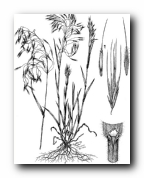
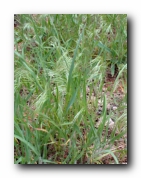
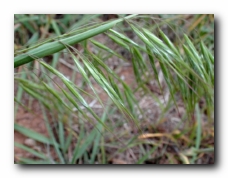
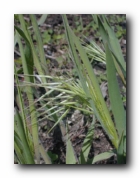
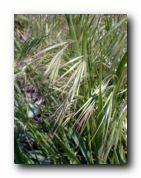
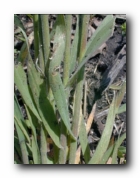
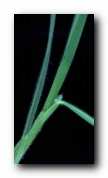
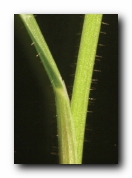
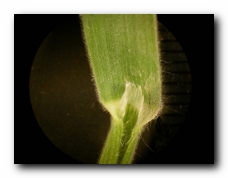
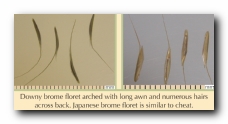
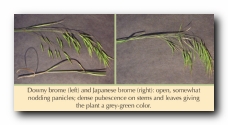
40" Rows:
Broadcast:
Loam:
Clay:
Habit: Erect or spreading tufted annual. Culms: Slender 30-60 cm. high, glabrous. Blades: Mostly pubescent throughout. Sheaths: Pubescent. Ligule: Membranous. Inflorescence: Panicle 5-15 cm. long, rather dense, soft, drooping, often purplish in maturity. Spikelets: Nodding, 12-20 mm. long. Glumes: Villous, the first 4-6 mm. long, 1-nerved, the second 8-10 mm. long, 3-nerved. Lemmas: Lanceolate, scabrous-puberulent to pilose-pubescent, 10-20 mm. long, narrowly 2-toothed at the apex (teeth 2-3 mm. long); awn straight, 12-15 mm. long. Palea: Shorter than its lemma, 2- keeled. Fruit: Grain furrowed, adhering to the palea, Habitat: Weed in prairies, waste places, roadsides, and sandy soils, May-July. Synonyms: Bromus tectorum L. var. glabratus Spenner Bromus tectorum L. var. hirsutus Regel Bromus tectorum L. var. nudus Klett & Richter
Special Notes:
Downy Brome (Bromus tectorum) Information #2